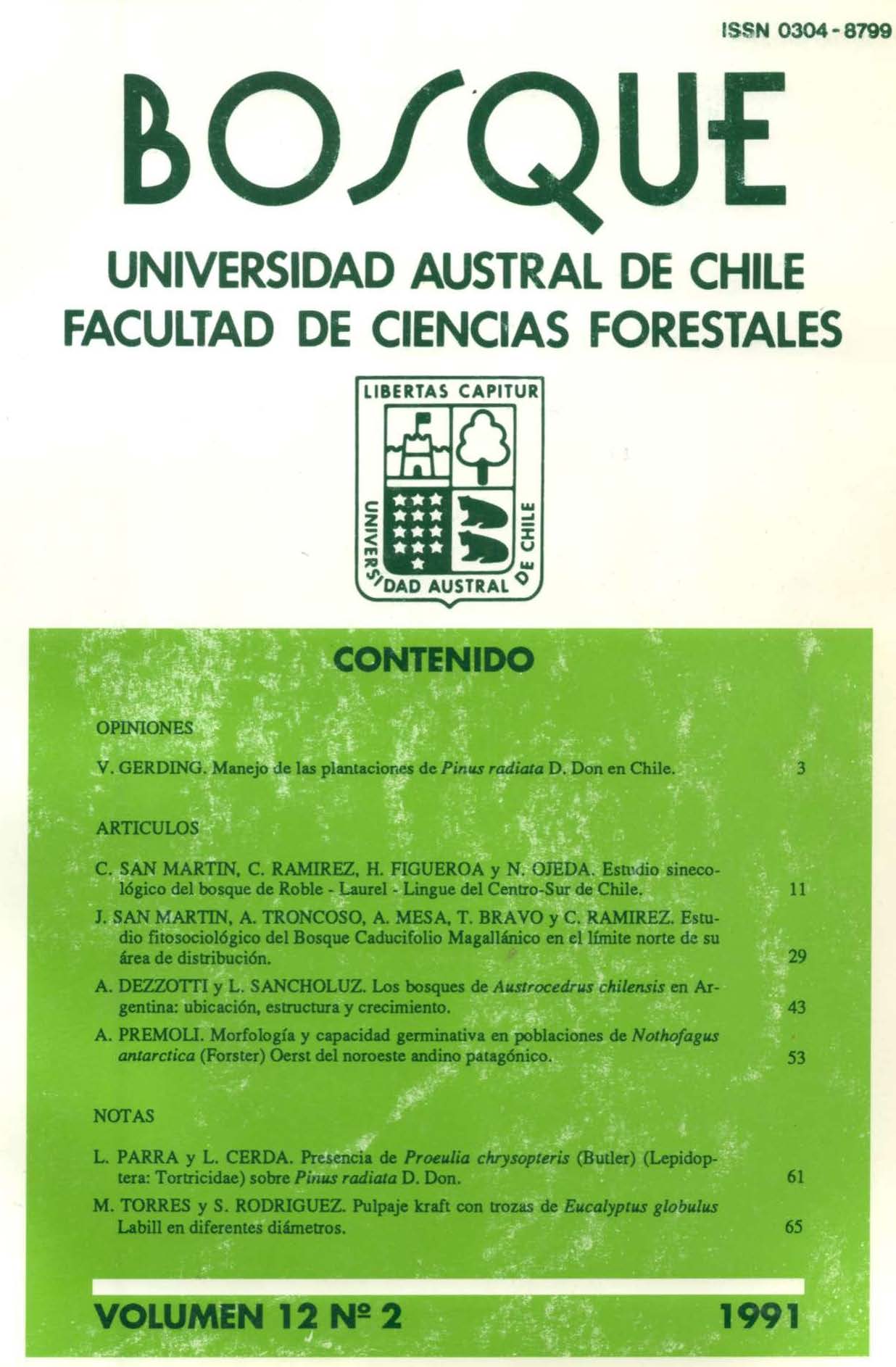Estudio fitosociológico del bosque caducifolio magallánico en el límite norte de su área de distribución
Contenido principal del artículo
Resumen
Se estudiaron los rodales más boreales de Nothofagus pumilio (lenga) y de Nothofagus antarctica (ñirre), en el Area de Protección de Vilches (35° 36' L.S. y 71° 03' L.W.) en la ladera occidental de la Cordillera de los Andes (VII Región de Chile).
Nothofagus pumilio forma bosques y matorrales de condición pura o mixta, con distribución discontinua, en altitudes de 1.400 a 2.000 msnm. Los bosques son estratificados, poseen trepadoras y crecen en laderas y quebradas húmedo/frías, con suelo volcánico del tipo trumao, rico en materia orgánica, ocupando una gradiente altitudinal entre 1.400 y 1.800 m. Nothofagus antarctica forma únicamente matorrales en hábitats y altitudes similares a las colonizadas por lenga.
En la estructura florística de estos rodales participan 80 especies vegetales, de las cuales un 92.5% son nativas. En el espectro biológico del bosque dominan fanerófitos y hemicriptófitos, y en los matorrales, este último grupo es sobrepasado por los caméfitos. En las formas de crecimiento la mayor representatividad la tienen arbustos perennifolios y hierbas, tanto anuales como perennes.
Las especies con mayor afinidad fitosociológica hacia Nothofagus pumilio son Maytenus disticha, Berberis rotundifolia y Festuca acanthophylla, que también presentan los valores de importancia más altos. Para Nothofagus antarctica, la mayor afinidad se encontró con Rumex acetosella y Baccharis rhetinodes, ambas con altos valores de importancia.
La mayor similitud florística se presentó entre el bosque de lenga y el matorral de ñirre. Los matorrales de ambas especies se unen con un 65.2% de similaridad y están restringidos a altitudes mayores, compartiendo con Nothofagus obliqua var. macrocarpa el límite altitudinal de la vegetación leñosa.
La comunidad boscosa de Nothofagus pumilio queda incluida como una variante con Chusquea culeou del Nothofagetum pumiliae Oberd. (1960) de condiciones más húmedas y la arbustiva, como Nothofagetum pumiliae Maytenetosum San Martín y Ramírez (1987), de condiciones más secas. El matorral de ñirre se asimila a la denominación de Nothofagetum antarcticae Skottsb. (1916).

